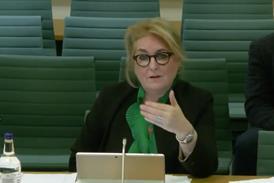Amending statements of case
District Judge Patricia Pearl on how to amend without pain - and in complianceAmendments correct mistakes, clarify the case and help to ensure that all the issues are before the court for the final hearing.
The rules about amendments are set out in the Civil Procedure Rules 1998 (CPR) part 17 and the accompanying practice direction.Colour codes and endorsementsThe appearance of a modern amended statement of case is likely to be quite different than under the old rules.
Solicitors may never have to resort to that grubby box of crayons again.
It is only necessary to show the previous version of the case if ordered by the court (CPR PD 17 paragraph 2.2).
If required, this can be done either in colour or by the use of a monochrome numerical code in a computer-generated document.
The colour can be generated by computer (PD 17 paragraphs 2.3 and 2.4).
Where colours are used, the old sequence has been retained: red followed by green, violet and yellow.Although a statement of case can be amended with the agreement of the other parties at any time (CPR rule 17.1 (2)(a)) and before service without permission (CPR rule 17.1 (1)) the court remains in charge and can disallow any amendment made without a court order.
Where the amendment changes the substance of a statement of case it must be re-verified by a statement of truth.
If the statement of case has been amended under order it is to be filed at the court, usually within 14 days of the order.
(CPR PD 17 paragraphs 1.3 and 1.4).An amendment made without permission must be endorsed 'Amended [particulars of claim/defence] under CPR rule [17.1(1)] [17.1(2)(a)]'.
Where the amendment is made with the permission of the court, the endorsement will read 'Amended [particulars of claim/defence] by Order of [Master][District Judge].........dated........'Although the endorsement can be tucked at the end of the document it is arguably better placed at the beginning, so that the nature of the document is clear from the outset.Unfortunately, an endorsement is regularly omitted by practitioners and this was commented upon by Lord Justice Brooke in Thurrock v Secretary of State for the Environment and another (2000) The Times, 20 December as 'sloppiness in practice'.Too late to amend?In the exceptional case of Charlesworth v Relay Roads Ltd (in liquidation) and others [1999] 4 All ER 397 Mr Justice Neuberger gave permission for an amendment after judgment had been delivered but before the order had been drawn up.
However, amendments made at such a late stage must also pass the test laid down in Ladd v Marshall [1954] 3 All ER 745: the party requesting the amendment must show that the fresh evidence relied on could not have been obtained with reasonable diligence for use at the trial.But in most cases, requests for amendment are more likely to be refused if the trial date is approaching.
The court will consider the financial implications of allowing a late amendment, the undesirable effect of an adjournment and the strain that a last minute change in the opponent's case can place on individual litigants.
The court will also take into account the overriding objective.
For example, in Woods v Chaleff [1999] CLY 500 the Court of Appeal considered that permission to amend should not have been given six days before the trial and pointed out that to allow such a late amendment may put the parties on an unequal footing and put one party at an unfair advantage.
Generally, any application for an amendment should be made as early as possible in the action, and if it is, permission will usually be given to amend.
There is no reason to believe that the overriding objective is inconsistent with the common-sense approach of Lord Justice Bramwell, who as long ago as 1878 declared that it was his practice to allow amendments unless he was satisfied that a party was acting in bad faith, or where his blunder had done some injury to his opponent which could not be compensated by costs or otherwise (Tildsey v Harper [1878]10 Ch D 393).
The key to deciding whether an amendment is to be allowed in any particular case is whether the amendment can be made without an injustice to the other side and there will be no injustice if the amendment does not cause a delay in the action and matters can be levelled out by an order for costs.
It is usual for the costs of and arising from the amendment to be paid by the party applying for the amendment.
Limitation period expiredThe amended statement of case takes effect from the date of the original statement of case (section 35(1) Limitation Act 1980).
So that a defendant is not deprived of a defence of limitation, there are restrictions on the types of amendment which can be made after a limitation period has expired.
These are set out in section 35(5) of the1980 Act and encapsulated in CPR rule 17.4.
An amendment will not be allowed to include a claim (cause of action) which was not in existence at the date of the original proceedings or a claim that does not arise out of the same facts or substantially the same facts as the existing claim.
Adding a claim for a money judgment in a mortgage possession action is not a new claim Lloyds Bank v Rogers [1999] 16 July LTL CA, but in 'The Casper Trader' [1991] 2 Lloyds Rep 237 it was held that adding a claim for a general duty of care to a contract claim was a new cause of action, and was disallowed.
The case of Welsh Development Agency v Redpath Dorman Long Ltd [1994] 4 All ER 10 is not only a good example of the difficulties encountered by courts in identifying if a proposed claim can be validly included by amendment but also a good analysis of the meaning of the relevant sections of the 1980 Act.Change of name or a new party?One person's change of name is another's substitution and CPR part 17 should be read in conjunction with part 19, which considers addition and substitution of parties.
A party can be added to a claim if it is desirable for the purpose of resolving the issues or if there is an issue between the new party and an existing party which the court should resolve as part of the proceedings (CPR rule 19.2(2)).An amendment can be allowed after the end of a limitation period if it is to correct the name of a party but only where the mistake was genuine (CPR rule 17.4(3)).
The courts will adopt a common sense approach and look at whether the mistake caused reasonable doubt.
The Court of Appeal in Gregson v Channel Four Television Corporation [2000] All ER(D) 956 permitted the claimant to correct his mistake where he misstated the name of the defendant as Channel Four Television Company, which unfortunately was no more than a dormant wholly owned subsidiary of Channel Four Television Corporation, the correct target.Those interested in the minutiae of the CPR will recognise this case as the one which confirmed that the wording of rule 19.5 was not inconsistent with rule 17.4(3).Where the limitation period has expired, substitutions are allowed where the proceedings were issued before the expiry of the limitation period and where the substitution is necessary but only where there has been a mistake, or if the claim cannot properly be carried on against the original party.Substitutions can also be made after a death or bankruptcy; in which case the representatives of the estate are named instead.'If I am not mistaken...'The courts have in the past considered the definition of a 'mistake'.
It is widely construed as an error without fault (Mitchell v Harris Engineering Co Ltd [1967] 2 QB 703).
The court may take a sympathetic view and allow the amendment or substitution.
Whether clients will be quite as forgiving is a different matter entirely.District Judge Patricia Pearl sits at Watford County Court

























No comments yet